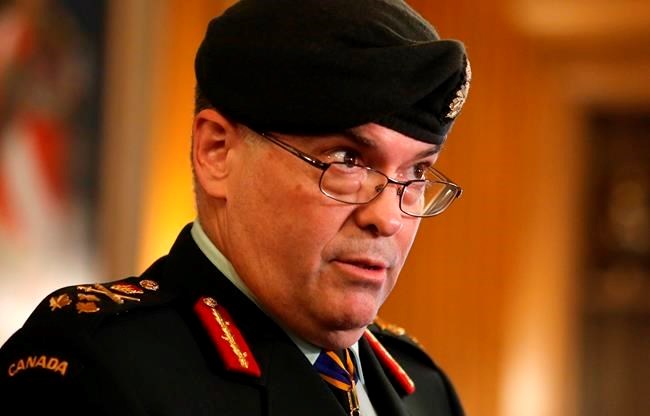OTTAWA — The commander of the Canadian Army says his force is being squeezed by more demands at home and abroad, especially in Europe, even as the number of soldiers available for such missions is shrinking.
In an interview with The Canadian Press, Lt.-Gen. Joe Paul says the Army shrunk by 1,200 soldiers last year as departures outpaced recruiting — and that it could lose hundreds more unless the situation changes.
"To me as a combat officer, this is a battle group worth of people," Paul said. "The numbers are not as high as we would like. And if we remain on the same trajectory, unfortunately, we can probably anticipate shrinking by another 800."
The shortfall comes as the Army is preparing to potentially send hundreds more soldiers to Latvia, where NATO wants to expand a battle group in response to Russia's war in Ukraine.
Prime Minister Justin Trudeau first announced an agreement with Latvia in June to essentially double the size of the 2,000-soldier battle group that Canada has been leading since 2016 by turning it into a brigade.
The deal followed similar arrangements involving seven other eastern European countries where NATO has battle groups designed to deter the threat of a Russian attack.
Canada contributes about 700 troops to the force in Latvia, which also includes soldiers and equipment from 10 other NATO members. That is up from about 600 before Russia's invasion of Ukraine in February.
While discussions between the allies involved in Latvia have already started, Paul indicated they will ramp up in earnest in the new year to determine what each country will contribute to the expansion.
"I'm going to be heading to Europe as well in February, where I'm going to be sitting down with many of my European colleagues so that we can find the most effective way of generating the capability," he said.
Among the questions to be answered is how many troops and what type of equipment Canada will need to have permanently stationed in Latvia, and what it can keep back home.
"What is it that I can have ready to go in Canada?" Paul said. "And what is it that I can protect to let me quickly, where our people can, marry up with their equipment and be ready to go?"
The calculations are not only based on the logistical challenges associated with quickly deploying troops, equipment and ammunition to Europe during a war with Russia, but also on what the Army's needs are in Canada.
"So how much kit can I afford having pre-positioned in Latvia without impacting too much my training back home, without impacting my capacity to do domestic operations?" he said.
The bottom line: the Canadian Army cannot sustain a significantly larger deployment to Latvia over the long term.
"If we were to generate two battle groups in Latvia, sustained, we cannot do it," Paul said. "The whole thing will break, especially when we need to reconstitute our ranks."
As for the personnel shortfall, which is being felt across much of the Canadian Armed Forces, Paul said the Army is taking a closer look at some long-established assumptions and ways of doing things to see where it can be more efficient.
That includes determining whether certain large-scale training exercises are necessary, given the burden placed on mid-tier officers and NCOs, who are also critical for leading missions on the ground.
"We don't want to over-train, we don't want to under-train," Paul said. "We just want to achieve the right sweet spot."
It also means taking a second look at the type of equipment the Army plans to deploy in the coming years, and whether more automation and even artificial intelligence can reduce some of its personnel needs, as part of a broader reassessment.
"What is it that we can fine tune?" Paul said. "What is it that maybe we need to do less? What is it that we should be doing more? So we're having a report card, kind of, being established right now. Because we need to do it."
This report by The Canadian Press was first published Dec. 28, 2022.
Lee Berthiaume, The Canadian Press
